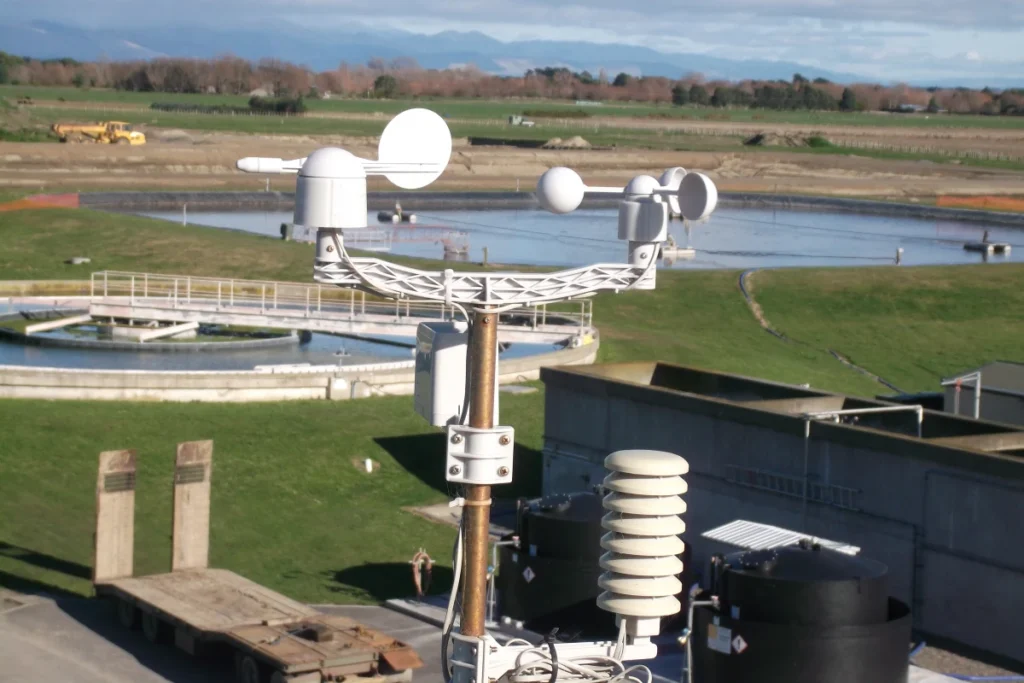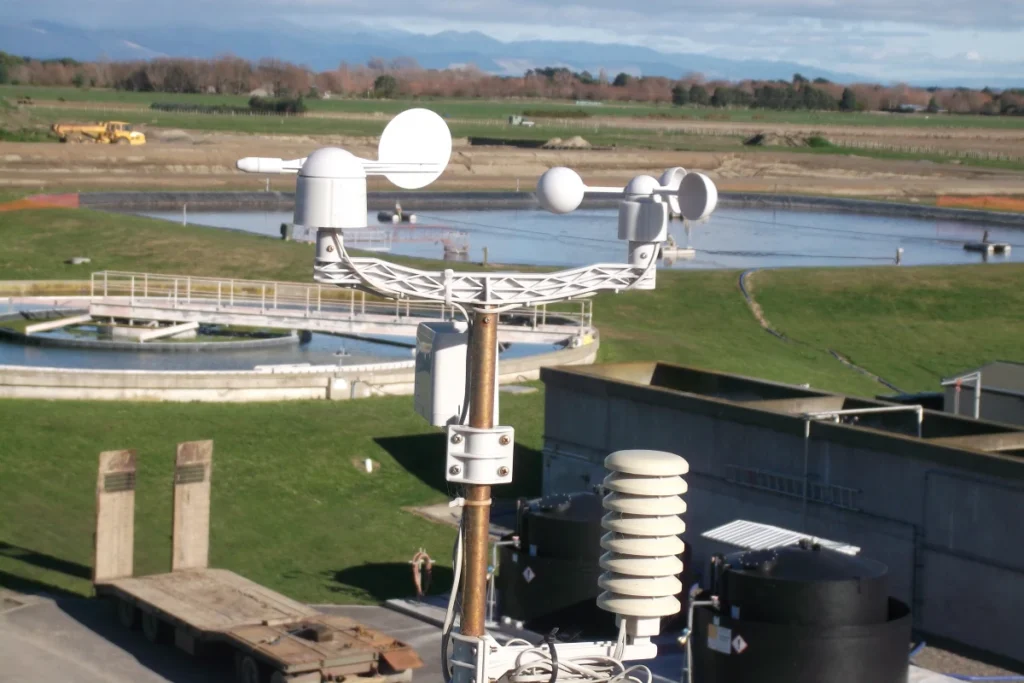
# Definition of Anemometer in Meteorology
An anemometer is a device used in meteorology to measure the speed and direction of wind. It is an essential tool for weather forecasting, climate studies, and various industrial applications. The term “anemometer” is derived from the Greek word “anemos,” meaning wind, and “metron,” meaning measure.
## Types of Anemometers
There are several types of anemometers, each designed for specific applications and environments. The most common types include:
– Cup Anemometer: This type consists of three or four cups mounted on horizontal arms, which rotate when wind blows. The speed of rotation is proportional to the wind speed.
– Vane Anemometer: Also known as a windmill anemometer, it features a propeller or a set of blades that rotate in response to wind. The direction of the wind can also be determined by the orientation of the vane.
– Hot-Wire Anemometer: This type uses a heated wire or filament. The cooling effect of the wind on the wire is measured to determine wind speed. It is highly sensitive and often used in laboratory settings.
– Ultrasonic Anemometer: This advanced type uses ultrasonic sound waves to measure wind speed and direction. It is highly accurate and can operate in harsh weather conditions.
## Applications of Anemometers
Anemometers are used in a wide range of applications, including:
– Weather Forecasting: Meteorologists use anemometers to gather data on wind patterns, which is crucial for predicting weather conditions.
– Aviation: Airports use anemometers to monitor wind conditions, ensuring safe takeoffs and landings.
– Environmental Monitoring: Anemometers are used to study wind patterns and their impact on ecosystems and air quality.
– Industrial Applications: In industries such as wind energy, anemometers are used to assess wind resources and optimize the performance of wind turbines.
## How Anemometers Work
The basic principle behind an anemometer is the measurement of wind force. Depending on the type, anemometers may measure wind speed by counting the number of rotations of cups or blades, by detecting changes in temperature of a heated wire, or by analyzing the time it takes for ultrasonic waves to travel between sensors.
For example, in a cup anemometer, the wind causes the cups to rotate. The number of rotations per unit time is counted and converted into wind speed. In a hot-wire anemometer, the wind cools the heated wire, and the change in electrical resistance is measured to determine wind speed.
## Conclusion
Anemometers are indispensable tools in meteorology and various other fields. They provide critical data on wind speed and direction, which is essential for weather forecasting, environmental monitoring, and industrial applications. With advancements in technology, modern anemometers have become more accurate and reliable, making them even more valuable in our understanding of atmospheric dynamics.
Keyword: define anemometer
